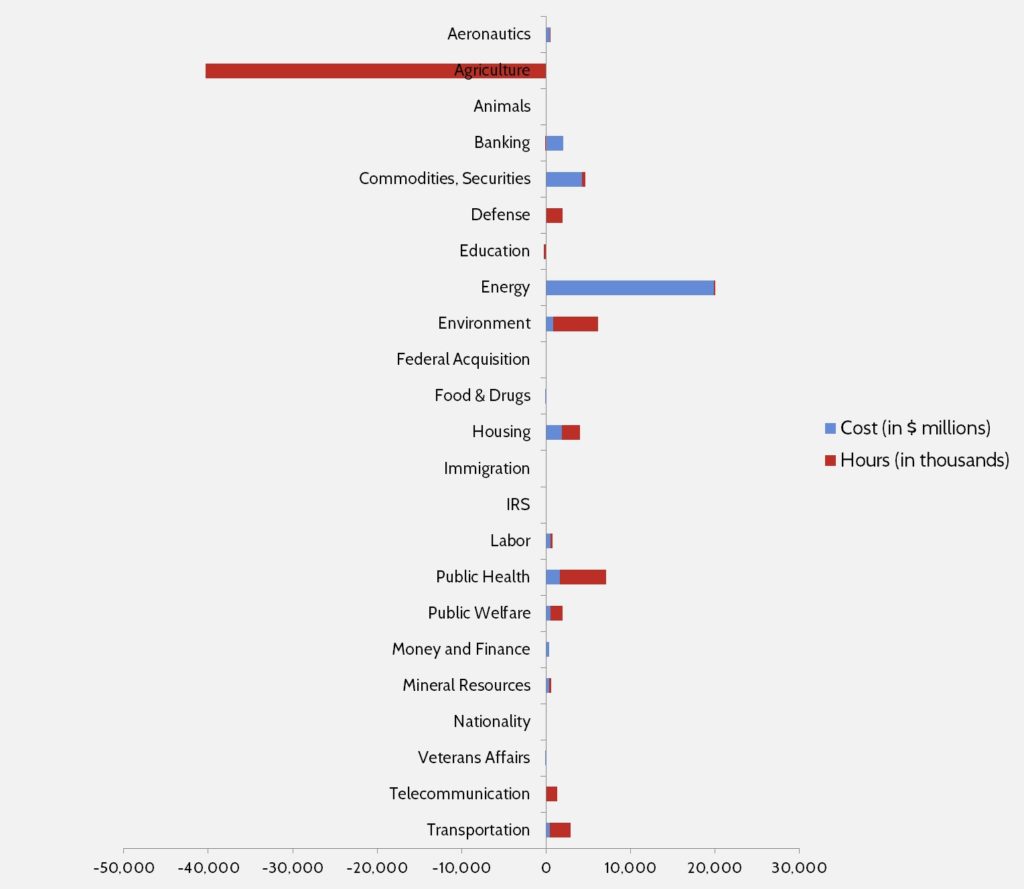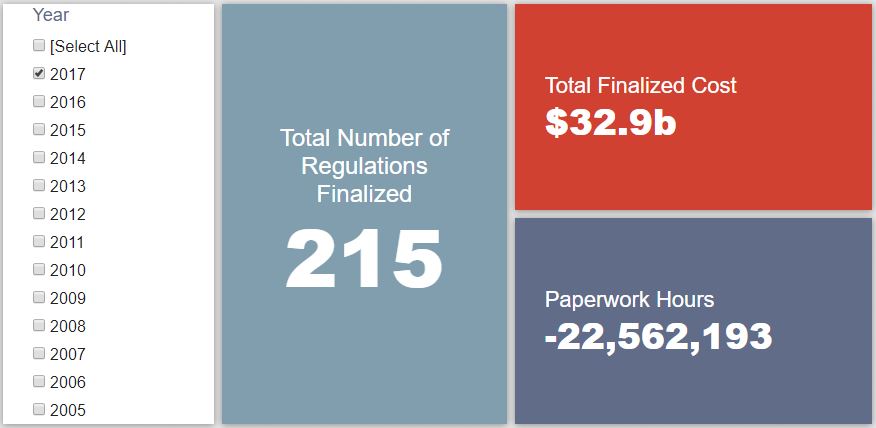Week in Regulation
November 6, 2017
Another Quiet Yet Deregulatory Week
The overall level of regulatory activity this past week continued the general trend of the past few months: modest volume of new rules with notable deregulatory measures winding their way through the rulemaking process. President Trump officially signed another Congressional Review Act (CRA) resolution into law. A Health and Human Services (HHS) proposal to give states greater flexibility under the Affordable Care Act (ACA) was the main administrative highlight. Altogether, agencies had more than $100 million in total published savings ($22 million annually), but did add roughly 84,000 hours of new paperwork. The per capita regulatory burden for 2017 is $286.
Regulatory Toplines
- New Proposed Rules: 38
- New Final Rules: 65
- 2017 Total Pages of Regulation: 51,233
- 2017 Final Rules: $32.9 Billion
- 2017 Proposed Rules: $58.7 Billion
The American Action Forum (AAF) has catalogued regulations according to their codification in the Code of Federal Regulations (CFR). The CFR is organized into 50 titles, with each title corresponding to an industry or part of government. This snapshot of final rules (a change from earlier versions) will help to determine which sectors of the economy receive the highest number of regulatory actions.
Tracking Regulatory Modernization
As expected in the prior week, the president formally approved yet another CRA resolution. His signature came despite a last-ditch, personal plea from Consumer Financial Protection Bureau Director Richard Cordray to veto the legislation. This continues the historic trend in 2017 by bringing the total amount of successful CRA resolutions to 15.
The other notable deregulatory action came in the form of HHS’s proposed “Notice of Benefit and Payment Parameters for 2019,” an annual rule under the ACA. Unlike many past years however, HHS has made this a deregulatory proposal due to the president’s first executive order directing agencies to take all possible administrative actions to loosen ACA regulations. The various provisions of this proposal could yield total annualized savings of $28 million upon finalization.
Click here to view the administration’s progress under the “one-in, two-out” executive order through the end of Fiscal Year 2017 (which ended on September 30).
Affordable Care Act
Since passage, based on total lifetime costs of the regulations, the Affordable Care Act has imposed costs of $53 billion in final state and private-sector burdens and 176.9 million annual paperwork hours.
Dodd-Frank
Click here to view the total estimated revised costs from Dodd-Frank; since passage, the legislation has produced more than 74.8 million final paperwork burden hours and imposed $38.9 billion in direct compliance costs.
Total Burdens
Since January 1, the federal government has published $91.6 billion in compliance costs ($32.9 billion in final rules) and has cut 18.3 million paperwork burden hours (due to 22.6 million in reductions from final rules). Click below for the latest Reg Rodeo findings.












